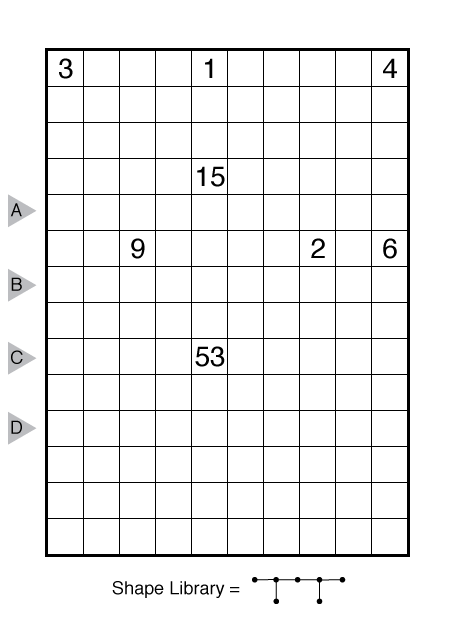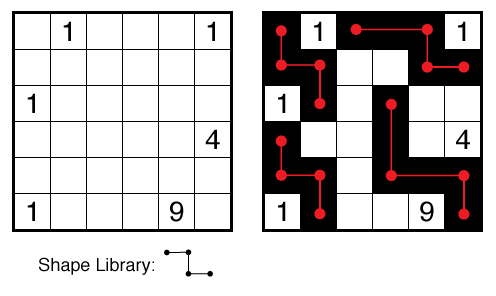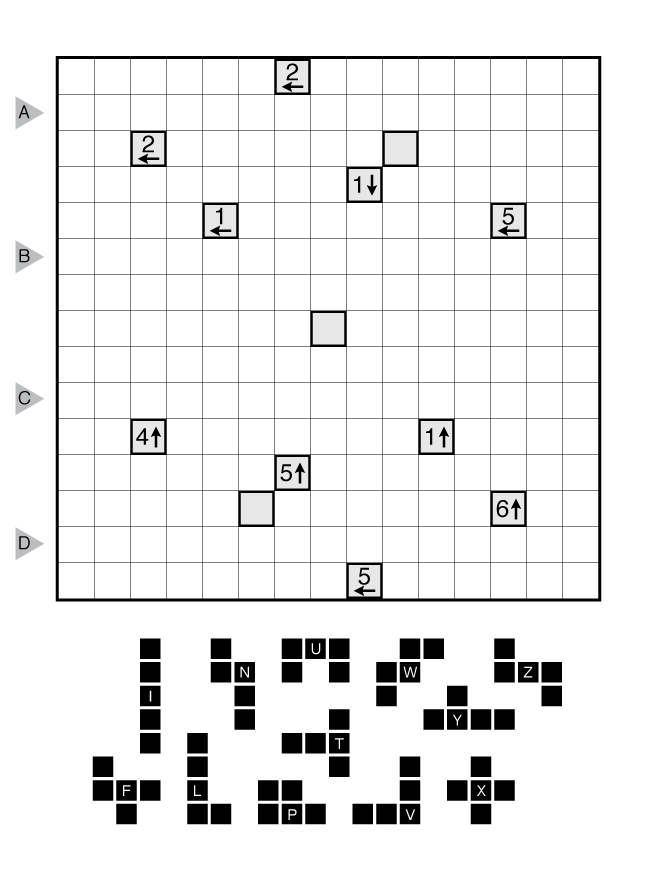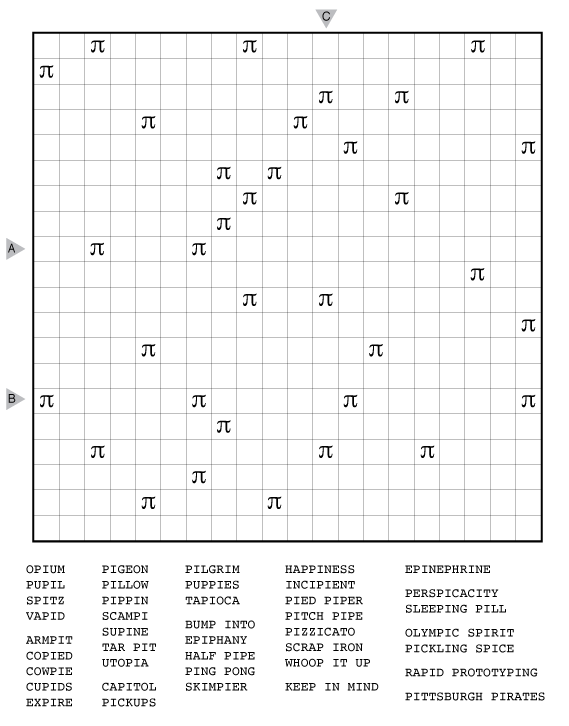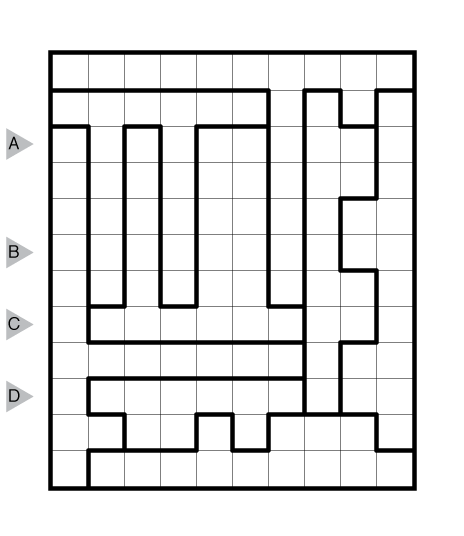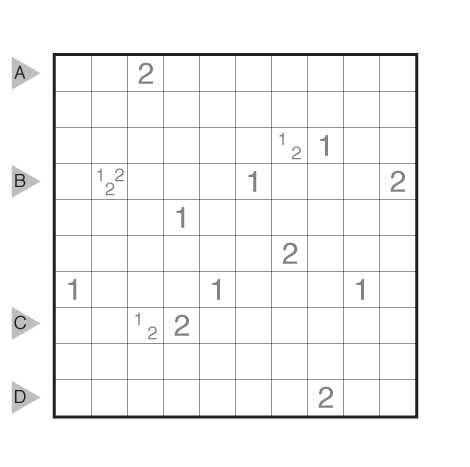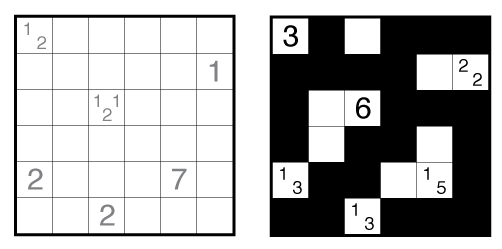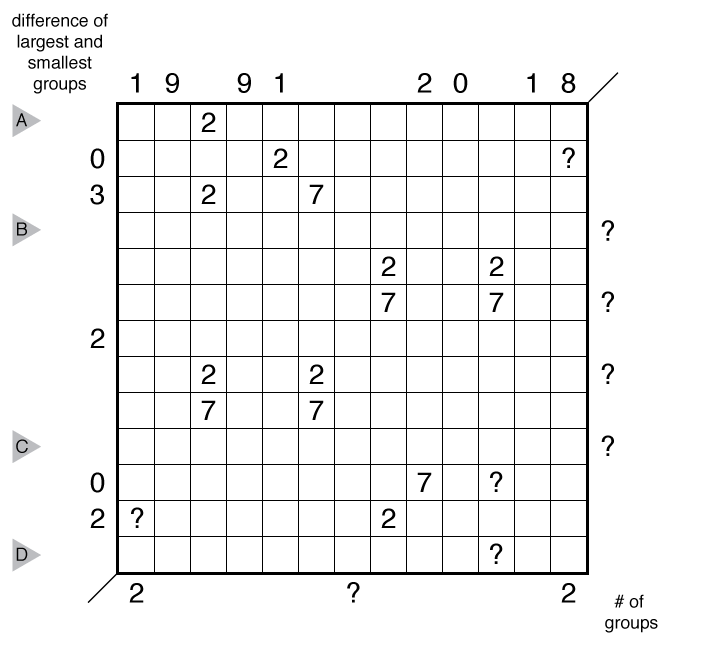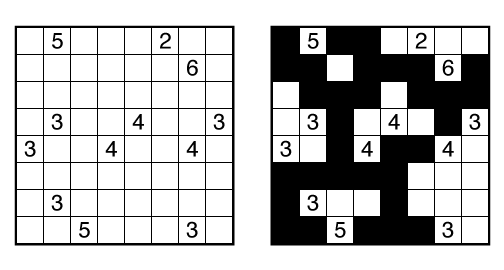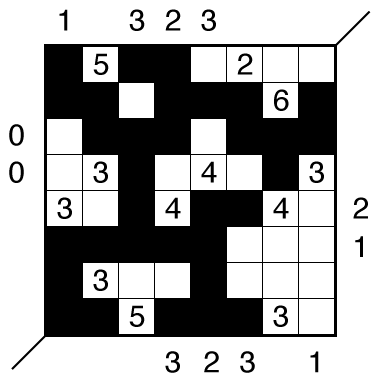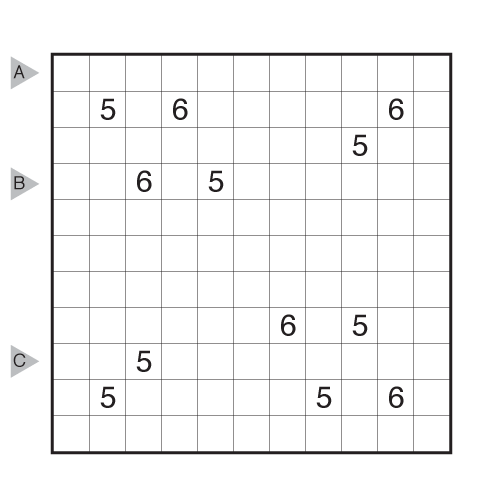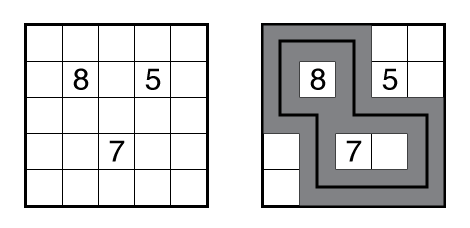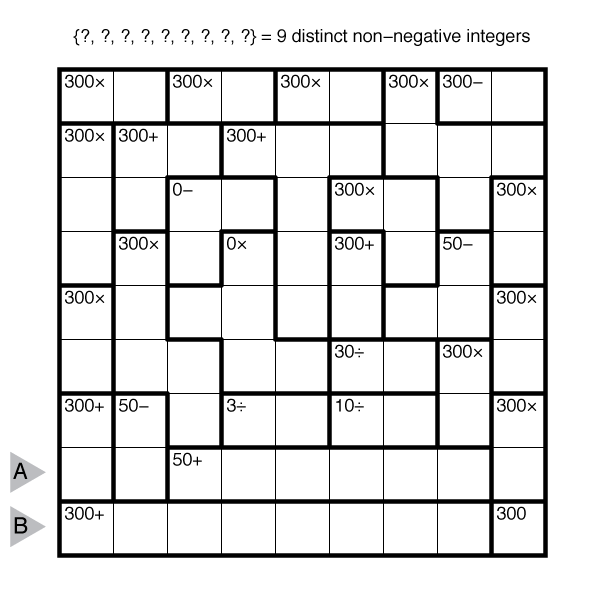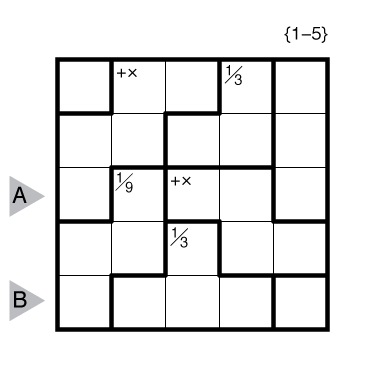Turf by John Bulten
(Note: puzzles during this bonus week are harder than usual; the four puzzles from Monday-Thursday are all about Thursday or Friday level difficulty.)
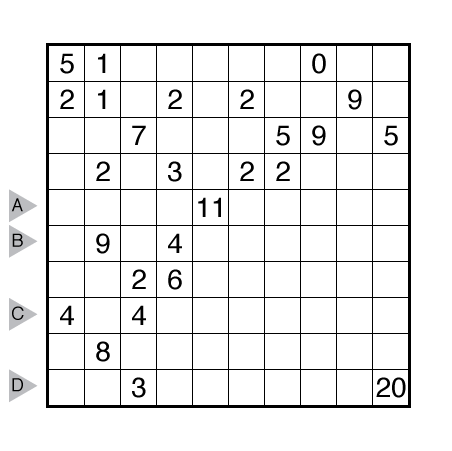
or solve online (using our beta test of Penpa-Edit tools).
Theme: Anchor
Author/Opus: This is the 42nd puzzle from our contributing puzzlemaster John Bulten.
Rules: Shade some white cells black so that one of the grid’s clues in each contiguous white or black region indicates the clued region’s area. (Each contiguous region must therefore have at least one clue.) Any other clue in the region must indicate how many of the clued cell’s immediate neighbors are white (up to 9, including itself).
Also see this example:
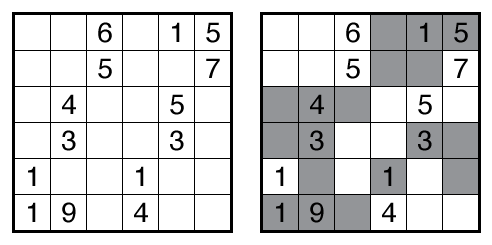
Answer String: Enter the length in cells of each of the black segments from left to right for the marked rows. Separate each row’s entry from the next with a comma.
Time Standards (highlight to view): Grandmaster = 3:45, Master = 6:15, Expert = 12:30
Solution: Answers for this week in this PDF.
Note: Turf is a shading puzzle created by John Bulten. We will have several more Turf puzzles from John in a few months when we start a new “Puzzlemasters’ Workshop” book series.

